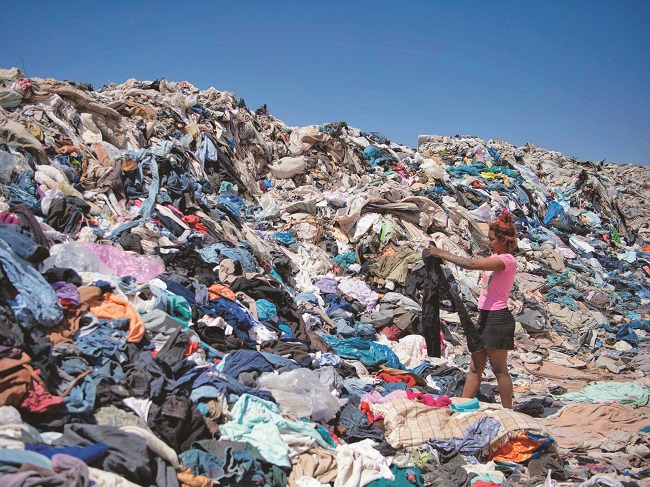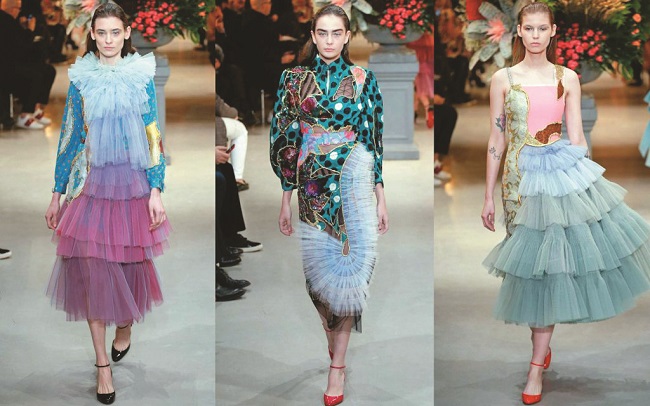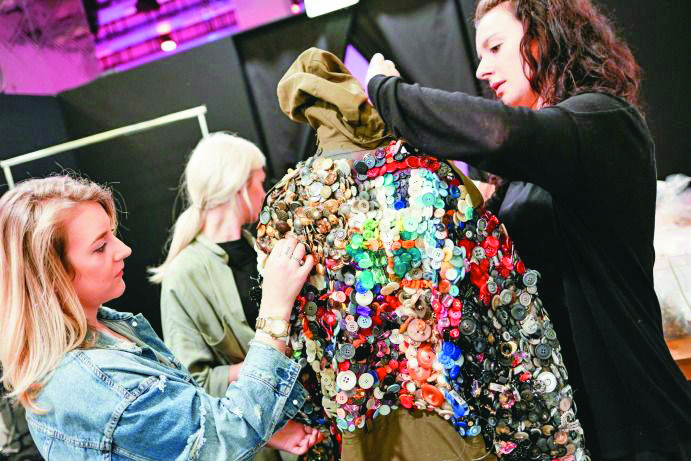
Environmental impact
The fashion and textile industries are the second largest polluters in the world, after the oil industry. As industries grow, the ecological damage is also increasing. To mitigate these problems, however, there are options and alternatives, where building a sense of and willingness to change is the first step toward improvement.

Figure 1. Percentage of pollution caused by different types of textiles.
Figure 1 depicts the percentage of pollution caused by different textile fabrics. The fashion and textile industries account for a high proportion of the deterioration in the quality of environmental resources, especially having a strong impact on land and water in many different ways. Textile dyeing wastewater used in the production of untreated garments containing harmful substances such as mercury, arsenic, lead and others is dumped directly into water bodies which are dangerous to human and aquatic life. born globally. Every time you wash clothes made from synthetic materials (polyester/nylon …), about 1900 small fibers will follow the drain to the sea, thereby creating a large amount of waste in the ocean.
Textile waste in landfills globally is increasing every year (Figure 2). The level of waste caused by buyers is a direct consequence of the global textile supply chain.

Figure 2. Garment treatment rate after use.
In the fashion and textile industries, waste removal is of great interest as the annual amount of waste is increasing. On average, there is an increase in fashion purchases of about 60% more than in 2000. These buying behaviors contribute to 39 million tons of post-consumer fashion waste generated globally each year – mainly weak in the form of clothing. More than 57% of all clothes thrown away will go to landfill, only one-fifth is recycled, the rest will end up in landfills or be destroyed.
Recycled fashion: the sustainable development model of the future
Recycled fashion here means creating garments with reused materials and reviving them with new vitality and value. Many countries and famous brands in the world are starting to focus on more ethical, protective and environmental actions. Countries are now using simpler weaving processes that eliminate the use of chemical dyes and synthetic colors. Organizations like Adidas have created collections made from ocean-sourced plastic waste, and brands like Zara focus on high street fashion, transforming their store into a durable one sustainable by 2025.

The main need to change the image of ethical fashion is consumer awareness towards sustainable clothing. Fashion brands must strive to provide a relevant and innovative retail system to attract young customers who are inclined towards eco-friendly fashion products. In addition, it has been observed that recycled clothing options are visually and functionally very limited; customers lack information about the product and are uncertain about the real benefits to the environment.
Recycling wastes in the textile industry
Textile waste can be classified mainly into three types of waste: Pre-consumer waste; Post-Consumer Waste and Industrial Textile Waste
Textile production consumes a large amount of natural resources. The use of harmful chemicals and the release of large amounts of carbon dioxide also add to the environmental problem. About 10 tons of textile products are discarded each year in Europe and the Americas, while this figure is doubled in China. These wastes clog landfills and pollute the environment. It is estimated that about 95% of the waste in the production of treated textile products can be reused. In recent years, due to depletion of natural resources and intensification of treatment, more and more textile waste is reused or recycled. According to the United States Environmental Protection Agency (USEPA), textile waste accounts for about 5% of all landfills; but every year, this post-consumer waste is recycled for only 15%, and therefore a large amount (85%) of it is piled up in landfills.

The Council on Textile Recycling (CTR) has classified textile recyclables as materials that are recycled from pre- or post-consumer waste. Primary waste, which is considered clean waste, is generated during the manufacturing process — through yarn processing, production of yarn and finished fabrics, technical textiles, nonwovens, clothing and shoes. Post-consumer waste is waste that is discarded by consumers due to a number of reasons such as consumers don't like the fabric or it can be wrinkled, stretched. Most post-consumer waste is of good quality, can be reused or recovered as second-hand, and is often traded to developing countries. In addition, textile waste that is not favored by consumers will be reused in production.
The constant change of the fashion era has led to an increase in textile product waste. The use of an appropriate recycling regime can help convert these wastes into raw materials, which can be used more in professional value-added products. Figure 3 shows textile waste treatment strategies according to the 3R concept, including reduction, reuse and recycling. Recycling textile waste offers a great advantage both economically and environmentally. It reduces negative environmental impacts, reduces landfill area, consumption of limited resources, energy and water consumption as well as the need for fixatives and dyes. However, recycling processes are not always preferred over conventional processes due to limitations and challenges.

Figure 3. Textile Waste Treatment Strategies 3R Concept.
Life cycle assessment and circular economy in the textile industry
The complete effect of a product, process or service on the environment can be assessed by a life cycle assessment (LCA). LCA includes a scientific method to study the impact of the entire product life cycle on the environment. It is not merely the quality of the product as well as the volume of waste that ends up in a heap like a landfill or in a kiln, but the life cycle of a product dictates its environmental impact.
LCA defines the complete process, i.e. from extraction of raw materials to development, use, recycling and waste disposal. The LCA also assesses whether greener technology improvements have been made. This methodical approach will lead to knowledge of the product chain's footprint in the environment and help make better process design decisions with less impact on the environment. LCA is also used to monitor carbon dioxide and greenhouse gas emissions, thereby examining water and energy flows in the process.
A circular economy is an economic model in which design, manufacturing, and service activities aim to prolong the life of materials, and eliminate negative impacts on the environment. The circular economy in the textile industry is concerned with reducing landfills or regulating resource flows, it also focuses on establishing methods that make it self-sustaining and recyclable. many times.
The consumption of textiles, along with housing, food and travel, leads to significant environmental impacts. Harmful impacts on the environment can be minimized by reusing and recycling waste. Current technologies allow recycling to be carried out on an ecologically sound, ethical, economical and acceptable basis. However, the textile recycling process still faces some problems, such as inappropriate methods applied to recycle many fibers; The market size is not enough to gather materials from the complete reprocessing of clothing; The consumption of virgin resources, such as cotton and crude oil, is still more distinctive than the recycling of textile fibers… Recycling is a good approach for the environment and socio-economic aspect. festival. Socio-economic support is required to ensure that manufacturers follow sustainable design practices for the textile industry.
Post: Dang Ba Nam
https://vinatex.com.vn/khong-chat-thai-trong-thoi-trang-va-det-may-nen-tang-cua-tuong-lai/
vinatex